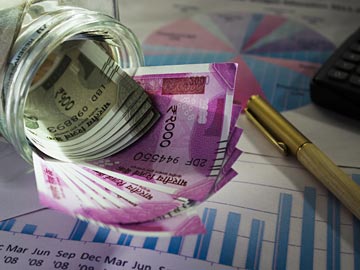Revised tax slabs
First things first. Take a look at the revised income tax slabs for the financial year 2025-26 under the new tax regime*:1
Income Tax Slab
| Income Tax Rate
|
|---|
Income up to ₹ 4,00,000
| Not Applicable
|
₹4,00,001 to ₹8,00,000
| 5%
|
₹8,00,001 to ₹12,00,000
| 10%
|
₹12,00,001 to ₹16,00,000
| 15%
|
₹16,00,001 to ₹20,00,000
| 20%
|
₹20,00,001 to ₹24,00,000
| 25%
|
Above ₹24,00,001
| 30%
|
Other Details to note:
Rebate:
No tax on income up to ₹12,00,0004 according to the new Budget update, u/s 87A.
Standard Deduction:
₹75,000 for salaried employees under the new regime.1
Family Pension Deduction:
Increased from ₹15,000 to ₹25,0001
Tax Savings:
Salaried employees can save up to ₹17,500 in taxes under the new regime because of the above changes.1
Default Regime:
The new regime is the default; switching to the old regime requires filing Form 10-IEA.1
Surcharge:
Capped at 25% in the new regime (down from 37% in the old regime).1
Major deductions and allowances
Here’s a list of some of the major deductions that you can avail of and reduce your tax exemption.
HRA
HRA, or the House Rent Allowance, is an allowance that you, as a salaried employer, can get. This may be partially or completely tax exempted, depending on several conditions. For instance, if you are not living in a rented house but are still getting HRA, it will be taxable. 2
Tip: Make sure to keep the rent receipts as evidence of payment made.
Standard deduction
For the financial year 2024-25, there is a standard deduction limit of ₹50,000 for the old tax and ₹75,000 for the new tax regime.2
LTA
2LTA stands for Leave Travel Allowance. Salaried employees who have incurred travel expenses during their leave can avail of LTA exemption. However, keep in mind that this does not include expenses related to entertainment, leisure, food, shopping, etc. Other things to know include:
- LTA can be claimed twice in a block of four years
- This allowance is available only for travel within India
- To make the claim, you need to travel by rail/ air or any other public transport.
Deductions under Section 80
Some major deductions are allowed under various subsections of Section 80 of the Income Tax Act. They include:
ection 80C
Under section 80C, you can claim up to ₹1.5 lakhs against investments and other tax-saving instruments. Some examples are the life insurance premiums, National Pension Scheme, Public Provident Fund, Sukanya Samridhi Yojana, etc.3
Section 80D
2Medical expenses that you incur and the insurance premium that you pay towards your health insurance policy can get you a deduction in your income tax.
i. Individuals and their parents who are below 60 years: ₹25,000
ii. Individuals and their families who are below 60 years but whose parents are above 60 years: ₹50,000
iii. The policyholder, as well as their parents, are over 60 years: ₹1 lakh
Section 24
As a homeowner, you can make a claim of up to ₹2 lakhs against the home loan interest that you pay for a self-occupied house. If your residential property is let out, then you are eligible to claim a deduction for the whole interest pertaining to the home loan. 2
Section 80E
When you take an educational loan for your/ your spouse/ child’s higher studies from a financial institution or a bank, then you can get a deduction for the interest that is paid towards the loan. 2
80TTA
A deduction of upto ₹10,000 is allowed on the income that is earned from the interest you receive on your savings account. The exemption is available for HUFs and individuals. 2
Section 80G
If you make a charitable donation to recognised charitable organisations, then you can get a tax deduction ranging from 50 to 100% of the amount that you have donated. 2
Section 80CCD(2)
2Salaried employees can claim a deduction for NPS contributions made by their employer under 80CCD(2). This is over and above the deduction under 80CCD(1).
IV. Central/ state government employees can get a deduction of up to 14% of their basic salary2
IV. Other employee under the old tax regime can have a maximum 10% deduction of their basic salary; under the new tax regime, a maximum of 14% deduction of their basic salary can be claimed. 2
Conclusion
The section of salaried employees in the country contributes a major chunk to the tax collected by the government. In such a scenario, the government also allows various tax exemptions and deductions on the salary. You can take advantage of these benefits only when you are well aware of how to reduce your tax liabilities. A clear understanding can help you in clearing your tax liabilities while making the most of the exemptions.



























 An ISO 9001:2015
An ISO 9001:2015 

